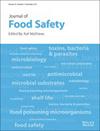Hybrid Evolutionary Methods
Journal of Rapid Methods and Automation in Microbiology
Pub Date : 2019-01-01
DOI:10.4018/978-1-5225-8060-7.CH014
引用次数: 0
Abstract
The limitations of single algorithm approaches lead to an attempt to hybridize or fuse multiple algorithms in the hope of removing the underlying limitations. In this chapter, the authors study the evolutionary algorithms for problem solving and try to use them in a unique manner so as to get a better performance. In the first approach, they use an evolutionary algorithm for solving the problem of motion planning in a static environment. An additional factor called momentum is introduced that controls the granularity with which a robotic path is traversed to compute its fitness. By varying the momentum, the map may be treated finer or coarser. The path evolves along the generations, with each generation adding to the maximum possible complexity of the path. Along with complexity (number of turns), the authors optimize the total path length as well as the minimum distance from the obstacle in the robotic path. The requirement of evolutionary parameter individuals as well as the maximum complexity is less at the start and more at the later stages of the algorithm. Momentum is made to decrease as the algorithm proceeds. This makes the exploration vague at the start and detailed at the later stages. As an extension to the same work, in the second approach of the chapter, the authors show the manner in which a hybrid algorithm may be used in place of simple genetic algorithm for solving the problem with momentum. A Hybrid Genetic Algorithm Particle Swarm Optimization (HGAPSO) algorithm, which is a hybrid of a genetic algorithm and particle swarm optimization, is used in the same modeling scenario. In the third and last approach, the authors present a hierarchical evolutionary algorithm that operates in two hierarchies. The coarser hierarchy finds the path in a static environment consisting of the entire robotic map. The resolution of the map is reduced for computational speed. The finer hierarchy takes a section of the map and computes the path for both static and dynamic environments. Both these hierarchies carry optimization as the robot travels in the map. The static environment path gets more and more optimized along with generations. Hence, an extra setup cost is not required like other evolutionary approaches. The finer hierarchy makes the robot easily escape from the moving obstacle, almost following the path shown by the coarser hierarchy. This hierarchy extrapolates the movements of the various objects by assuming them to be moving with same speed and direction.混合进化方法
单一算法方法的局限性导致尝试混合或融合多种算法,希望消除潜在的局限性。在本章中,作者研究了用于问题求解的进化算法,并尝试以独特的方式使用它们,以获得更好的性能。在第一种方法中,他们使用进化算法来解决静态环境中的运动规划问题。引入了一个称为动量的附加因素,它控制机器人路径遍历的粒度,以计算其适应度。通过改变动量,可以对地图进行更精细或更粗糙的处理。这条路径沿着几代人进化,每一代都增加了路径的最大可能复杂性。除了复杂性(转弯数)外,作者还优化了机器人路径中的总路径长度以及与障碍物的最小距离。该算法对演化参数个体和最大复杂度的要求在初始阶段较低,在后期阶段较高。使动量随着算法的进行而减小。这使得探索在开始时是模糊的,在后期是详细的。作为对同一工作的扩展,在本章的第二种方法中,作者展示了一种混合算法可以用来代替简单的遗传算法来解决动量问题的方式。混合遗传算法粒子群优化(Hybrid Genetic Algorithm Particle Swarm Optimization, HGAPSO)算法是遗传算法和粒子群优化的混合,用于同一建模场景。在第三种也是最后一种方法中,作者提出了一种分层进化算法,该算法在两个层次中运行。粗层次结构在包含整个机器人地图的静态环境中找到路径。为了提高计算速度,地图的分辨率被降低了。更精细的层次结构获取地图的一部分,并计算静态和动态环境的路径。当机器人在地图上行进时,这两个层次结构都进行了优化。随着时代的发展,静态环境路径越来越优化。因此,不像其他进化方法那样需要额外的设置成本。更精细的层次结构使机器人更容易从移动的障碍物中逃脱,几乎遵循粗层次结构所示的路径。这个层次通过假设不同物体以相同的速度和方向移动来推断它们的运动。
本文章由计算机程序翻译,如有差异,请以英文原文为准。
求助全文
约1分钟内获得全文
求助全文

 求助内容:
求助内容: 应助结果提醒方式:
应助结果提醒方式:


